D'Addario EJ43 Review: Pro-Arte Classical Guitar Strings - Light Tension
Street Price:
Manufacturer:
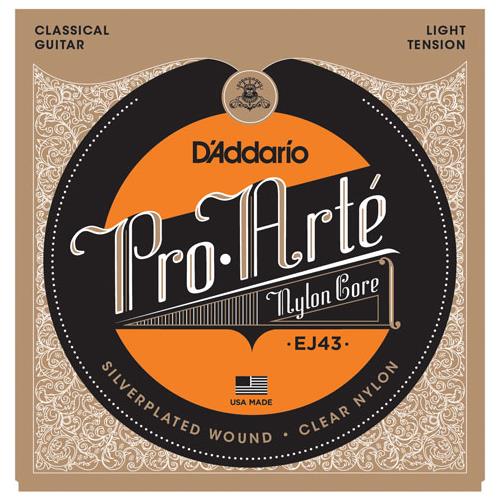
Light Tension
The wider neck of classical guitars are punishing enough as it is, so I don't want to make it any harder by using strings with high tension. This is why I've been using light tension sets, and recommend the same for students. The D'Addario EJ43 is my go-to light tension set, it provides comfortable playability, without compromising tone and response.
Specifications
- Treble Gauges: .0275, .0317, .0397
- Bass Gauges: .028, .033, .042
- Treble Core Material: Clear Nylon
- Bass Core Material: Multifilament Nylon
- Winding Material: Silver Plated Copper
Playability
While steel string guitars are grouped by gauge (thickness), nylon strings don't progressively get thicker from high E to low E, so they are grouped by tension. As an example, the EJ43's B string (0.317) is thicker than the D string (0.28), and the same applies to the G string being thicker than the A string. This non-linear relationship between gauge and tension is due to the different materials used for the treble and bass strings. The treble strings are made from thicker solid nylon, while the bass strings have thin multi-filament nylon cores wrapped in silver-plated copper. Thankfully, this difference in thickness is subtle enough to be somewhat negligible in terms of playing feel.
Being a light tension set, the EJ43 is super comfortable to play, and this really is its best trait. Fretting notes, and bars can be executed in a more relaxed manner, great for students and total beginners. There's less finger soreness and hand fatigue, which allows for longer and more enjoyable practice. This is the reason why this set works well with student-friendly nylon string guitars like my Yamaha C-40, and my son's 3/4 size classical guitar.
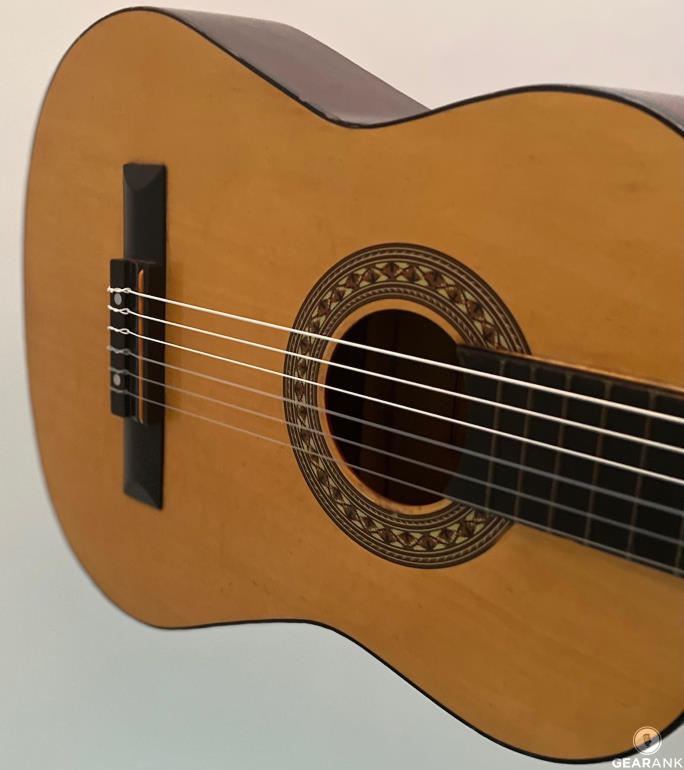
D'Addario EJ43 strings on my son's 3/4 size classical guitar.
Plucking and strumming the set is a breeze, especially when your fingernails are trimmed properly for classical guitar playing. You don't need to use much force to make the string sound good. The downside to its light tension is the tendency to over press the strings, which can cause unwanted intonation issues, fretbuzz and other fret noises. This is especially prevalent when using rest strokes, an intermediate to advanced level technique that ups the projection of sound, used to emphasize certain notes. Thankfully, this is not much of a problem for beginners and students.
The EJ43 bass strings have flat semi-polished windings, which gives them a smooth feel for fingernail noise reduction. This also makes changing positions and slide techniques easier to execute. One downside I notice is that there is a tendency for fingers to slip out of position, but this can be addressed by technique adjustments.
Tone
As expected from thinner strings, the EJ43 set has a trebly voicing that makes it sound responsive and articulate. Thankfully it's not overly bright, but it's not as full sounding as I would like it to be. Moving the position of your right hand closer to the neck makes it sound a little warmer, but I can still hear high frequency zing. Even the bass wound strings have that upper frequency crispness to them. Note that the wound strings lose some of the brightness after some time, but the clear nylon treble strings hold their tone much longer.
Another thing I like about this set is how well it responds to picking hand position changes. As mentioned above, I can get mellower tones by plucking the strings closer to the neck.
while moving towards the bridge make it sound brighter. Light tension sets are known for lacking volume, but I find the EJ43 to be quite loud as it is. My main concern though is the lack of percussiveness when attacking the strings. This can be good or bad, depending on your style of playing.
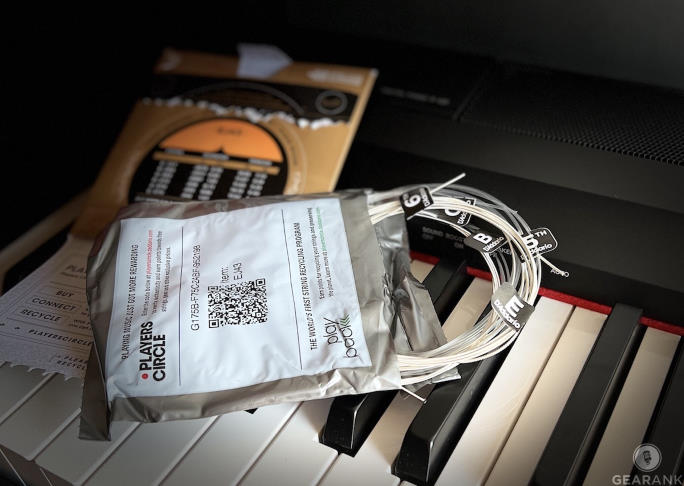
Each string comes with paper labels to ensure proper arrangement on your guitar
Tuning Stability and Longevity
The EJ43 does not come with ball ends, so I had to tie it on to the bridge old school style. This is definitely a bit more annoying and time consuming than ball ends, but it is what most classical bridges are made for. The strings tend to slip slightly when freshly installed. But once broken in, I've never had any tuning stability issues. Because of the lower tension, I have to be careful not to attack the strings too much, which may cause the string to go out of tune. This set stays fresh sounding for weeks, the clear nylon treble strings could possibly last a lifetime. But you have to keep an eye on the bass strings, since it uses multi-filament nylon core, the entire structure is held together mainly by the windings. As the windings degrade, so does the structure, which affects intonation and eventually causes breakage. Since I'm not using classical guitars as much, I only change the strings when absolutely needed - which usually is when the D-string windings loosen.
Packaging
D'Addario packs this set inside a plastic foil wrapper, which is in turn is housed in a carton packet. Both the foil wrapper and packet are properly sealed to prevent any tampering. Removing the packet seal opens it up to show the foil wrapper inside, which contains all the six strings. This wrapper features D'Addario's VCI (Vapor Corrosion Inhibitor) foil, which ensures that the strings you get are factory fresh upon opening by protecting it from the elements. So far, I find the quality of freshly opened strings to be consistent. Since this set doesn't have ball ends, there are no color coded ball ends that serve as installation guides. Rather, each string has a small paper label attached, showing which position each one is supposed to be strung to.
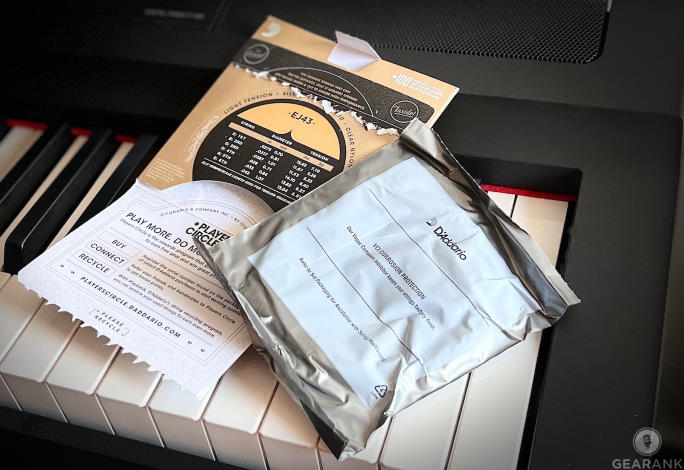
D'Addario EJ43 Packaging.
Brand
From a small family-owned business, D'Addario is now one of the biggest string manufacturers. The reason why we now can easily get our hands on a wide variety of strings is largely due to them developing the first automated string winder. These days, their strings cover everything from steel and nylon string acoustics, to electric guitars, basses and more. They also have a long list of artist endorsees, the EJ43 in particular is the favorite of classical guitarist Pavel Steidl, who uses the set on his ancient 19th century instruments.
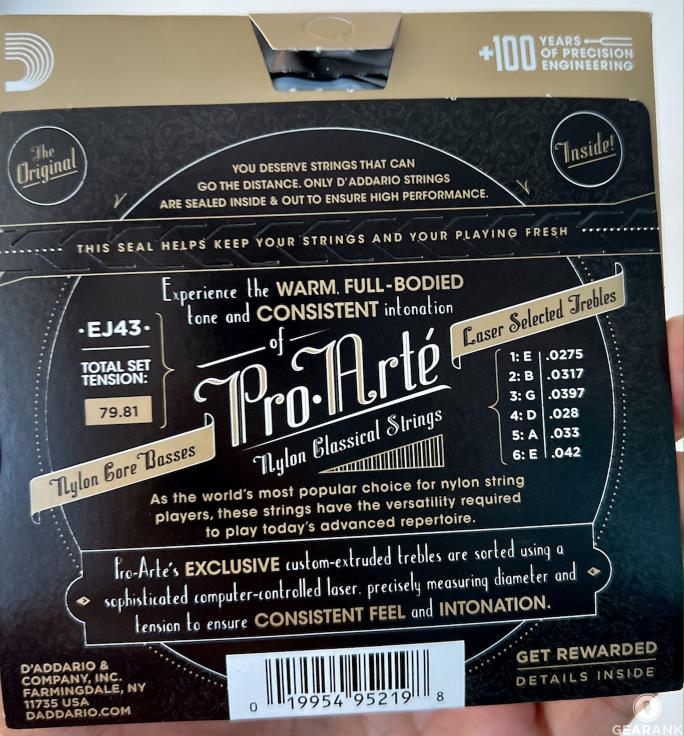
D'Addario EJ43 - back of the packet it comes in.
Overall
With its comfortable playing feel, and articulate tone - the D'addario EJ43 set is highly recommended. It has easy playability that even novices can appreciate, while having good enough tone and response that meet the needs of experienced musicians.
Cons
- Lacks percussive attack
- Not as full sounding as I'd like it to be
Pros
- Easy on the fretting hand
- Bright and articulate tone
- Smooth flat semi-polished winding
- Good quality packaging
Gearank High Notes
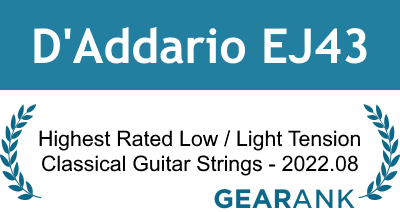
- 2022.08: Highest Rated Low / Light Tension Classical Guitar Strings
- 2020.08: Highest Rated Low / Light Tension Classical Guitar Strings
- 2019.07: Highest Rated Low / Light Tension Classical Guitar Strings








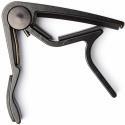
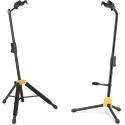
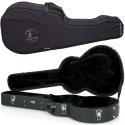
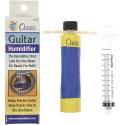

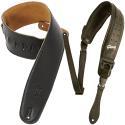


Comments
Thanks for very comprehensive
Submitted by raymondmitchell... (not verified) on
Thanks for very comprehensive review..I'll try these strings as Augustone Blacks have not worked for me (particularly the "D" which is too frail for want of a better word). Regards Ray Mitchell